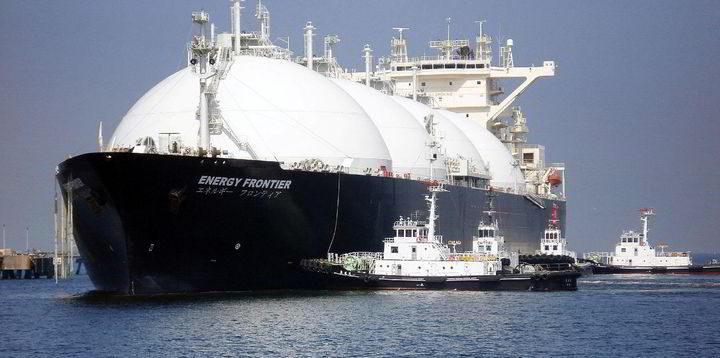
Between January and October, France imported 4.45 million tonnes of Russian LNG, an increase of 52 percent in one year.
It comes as Russia's deputy prime minister opened the door to a return of gas supplies to Poland and Germany via the Yamal gas pipeline, which is currently unused.
But this is unlikely to happen as Europe has found other sources, including Russian liquefied natural gas.
Moscow is currently sending contradictory signals. After threatening to cut its oil production in protest against the European embargo on crude and the price cap, Russia says it is ready to resume gas deliveries via the Yamal pipeline.
"The European market remains relevant because the gas shortage persists and we have the opportunity to resume supplies," the deputy prime minister in charge of energy, Alexander Novak, told the official news agency Tass.
He said the Yamal pipeline, which links Russia to Poland and Germany, had been stopped for "political reasons".
Shortly after the outbreak of the war in Ukraine, as supplies to Europe began to dwindle, Gazprom stopped its deliveries via Yamal. Then the Russian company demanded that Poland pay in roubles.
Warsaw refused and the Polish government terminated its contract with Gazprom.
At the end of August, the pipeline was shut down for three days of maintenance, but has not been reactivated since. The flows were then reversed to allow Poland to be supplied from Germany.
These statements could indicate that the various measures taken against Russia and its hydrocarbon production are beginning to dry up its economy.
Comment: Wishful thinking.
So far, Moscow has been able to rely on the liquefied natural gas (LNG) market to keep its exports high. The more flexible transport of this energy by ship allows the country to diversify its customers.
Comment: However, to do this, its more expensive and less efficient, that's why Russia and China intend to use pipelines. It's the West that has had to resort to LNG.
Russia has developed an ambitious programme to increase its liquefaction capacity. By 2035, it hopes to be able to export 80 to 140 million tonnes per year, compared with 35 million today.
Novatek still hopes to restart the Arctic LNG 2 project, in which TotalEnergies has invested but which has been at a standstill since the Western sanctions, by the end of 2023.
A large part of Russian production could therefore now be liquefied and then shipped to international markets.
The future of gas pipelines is more uncertain. To resume deliveries to Poland, Moscow will first have to ease its own sanctions against Warsaw.
And on the Polish side, there is nothing to suggest that they are ready to start buying from Russia again, despite the fact that they have largely diversified their sources this year.
Comment: Diversified? Sure! Poland was telling its citizens it could collect sticks from the forest as firewood, and in response there were huge queues at Poland's coal suppliers.
In Europe, the pressure has eased in recent weeks as temperatures have risen. Stocks have not really been affected despite the first cold snap in December.
They have even started to be filled up again and now stand at an average of 83 percent. Germany, which had fallen to a filling rate of 87 percent, has risen to 88 percent in the last few days (compared to 77 percent at the same time last year), while Poland has a record rate of 96 percent, putting it in a strong position.



Comment: Some Western countries, such as the UK, in a rather lame and failed attempt to cover their tracks, have been importing their Russian energy supplies from other nations, because in doing so the product can be relabeled as no longer of being of Russian origin: UK 'quietly' imports $919 million worth of Russian oil since March - The Times